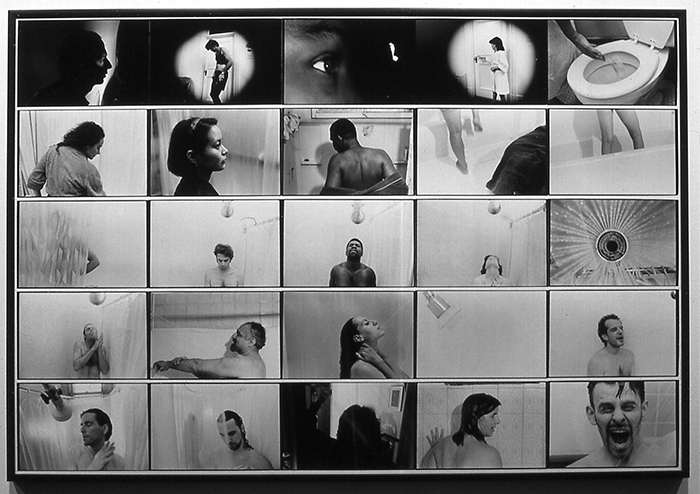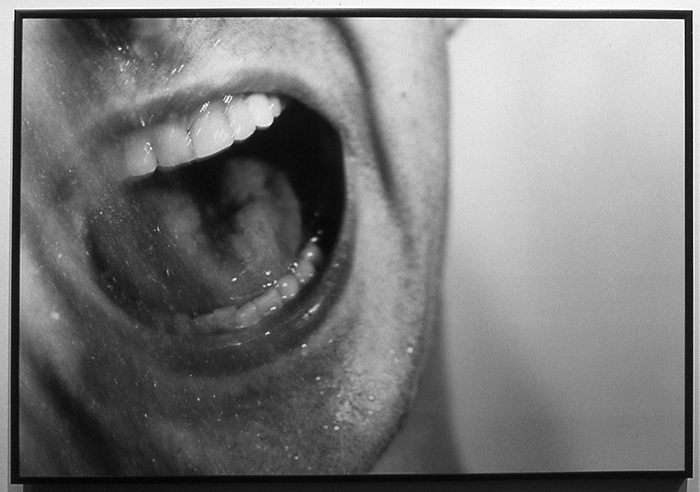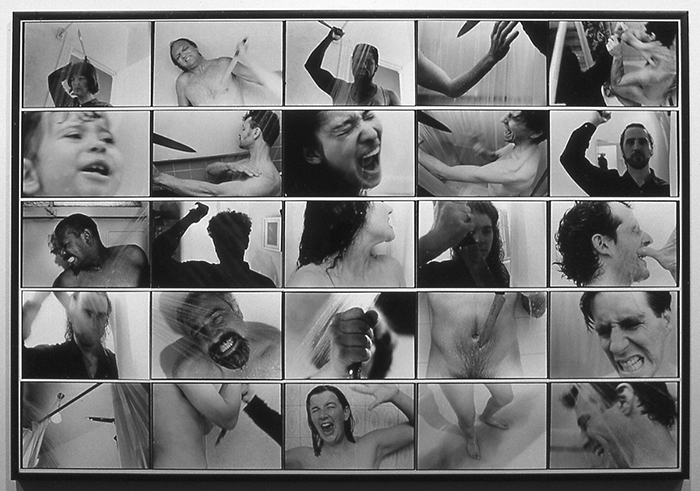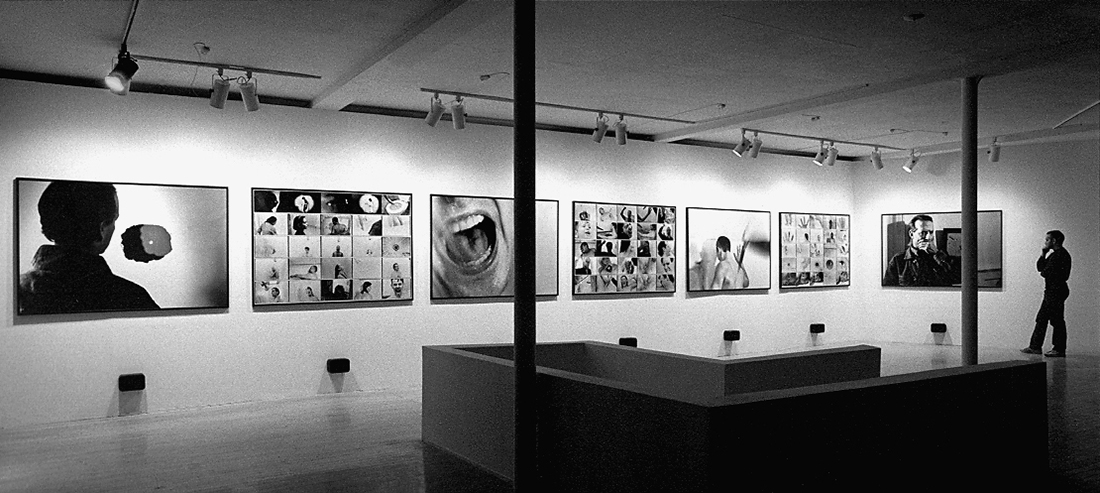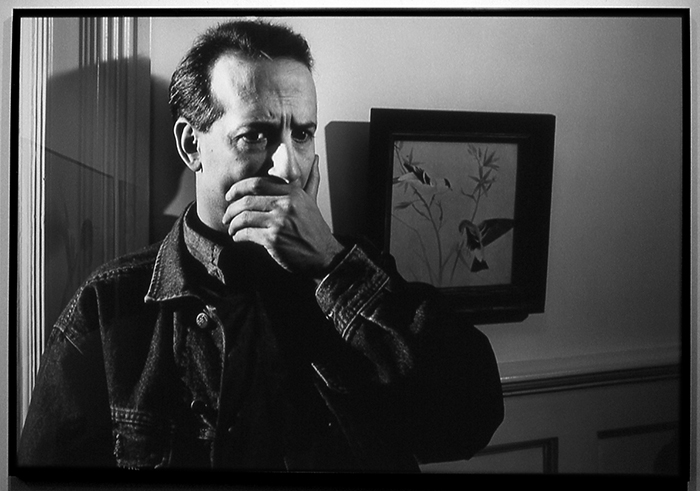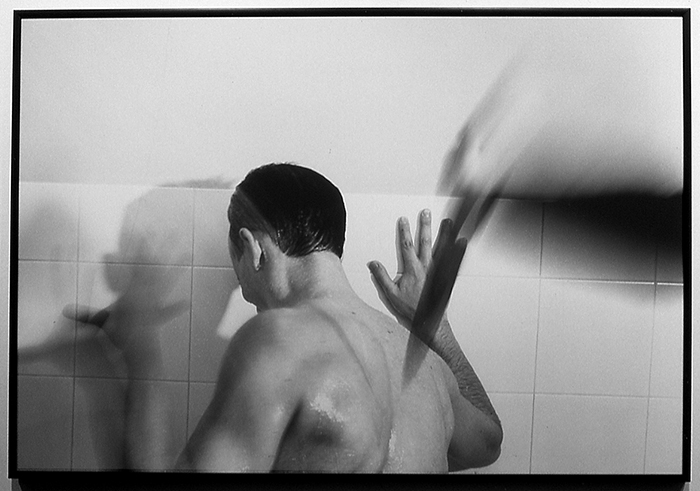Artist’s Statement
Pyschoanalysis was a collaboration between Bill Parsons and Chuck Samuels.
Psychoanalysis is an interactive, multidisciplinary installation integrating photographic imagery, music and diegetic sound. Its gaze is directed at one of the most brilliant and misogynist montages in film history: the shower scene in Alfred Hitchcock’s Psycho. The images and soundtrack of the original are dissected then resurrected to present a less than seamless rendering, encouraging the viewer to reflect on such issues as voyeurism, fetishism, the structure of cinematic narrative, the treatment of gender in Hitchcock and mainstream film, among others.
The work on the soundtrack was supported by a grant from The Canada Council for the Arts awarded to Bill Parsons.
Psychoanalysis: Exhibition history
Solo (or duo) shows:
1996 Galerie 101, Ottawa
Galerie Vox, Montréal
Psychoanalysis: Bibliography
2014 Philipp Dominik Keidl, “Flickering Memories: Chuck Samuels and Mike Hoolboom,” Global Engagements in Contemporary Canadian Art, ed. Loren Lerner, p. 329-39. Montreal: Centre for Contemporary Canadian Art Academy, 2014, Web
1996 Lucinda Catchlove, “We’re all psycho,” HOUR, April 11-16, 1996, Montréal
Virginia Howard, “Exhibits explore psyche, vanity, art as art,” The Ottawa Citizen, May 26, 1996, Ottawa
1999 Will Straw, “Psychoanalysis,” image/duration Catalogue, ed. Tim Dallet, Gallery 101 Publication, Ottawa, p. 35-44.
Psychoanalysis: Images published
2006 Exit Magazine, “REMAKES,” No. 21, February, Madrid, p. 31 – 32, p. 63 – 67, p. 82 – 83.
1998 American Photography 14, Amilus, Inc., Hong Kong, p. 216-217.
1997 Aperture, “Dark Days: Mystery, Murder, Mayhem,” No. 149, New York, p. 56-57.
Psychoanalysis: Exhibition details
The photographs:
The photographs accurately reconstruct specific frames from the shower scene in Psycho except that, instead of depicting one white woman murdered by a cross-dressed man, the images present different people of divers ages, genders, sizes, races, etc., assuming both roles.
Seventy-nine photographs are assembled in a grid-like, storyboard format within seven identically sized (117x171cm / 46×67 inches) panels. Four large, individual black and white photographs – their size suggestive of projection screens – alternate with three panels, each a grid of twenty-five 23x33cm / 9×13 inch black and white prints. Each of the seven panels of Psychoanalysis is mounted, unmatted, in a black wooden frame hung linearly with 25cm / 10 inches between frames.
The soundtrack:
The music and diegetic sounds (the shower, the screams, the drain, etc.) of the original soundtrack are reconstituted employing instrumentation not used in the original film, and by sampling, editing, distorting and processing recordings of Hitchcock speaking about Psycho. Although Hitchcock’s voice is utilized as a musical instrument, at times his words are still discernible.
The three distinct sixty-second segments of audio soundtrack are linked to several motion detectors installed on the ceiling above the frames. As viewers move in front of different panels, one or more of the three portions of the soundtrack are activated. These sounds, related to the images in front of the viewer, emanate from speakers mounted on the wall below the panels. The viewer’s movement through the installation (and the movements of other viewers) determines the aural experience, making each viewing of Psychoanalysis a singular event.
Psychoanalysis: Press
Psychoanalysis: Inquiries
Please contact Bill Parsons and/or Chuck Samuels.

